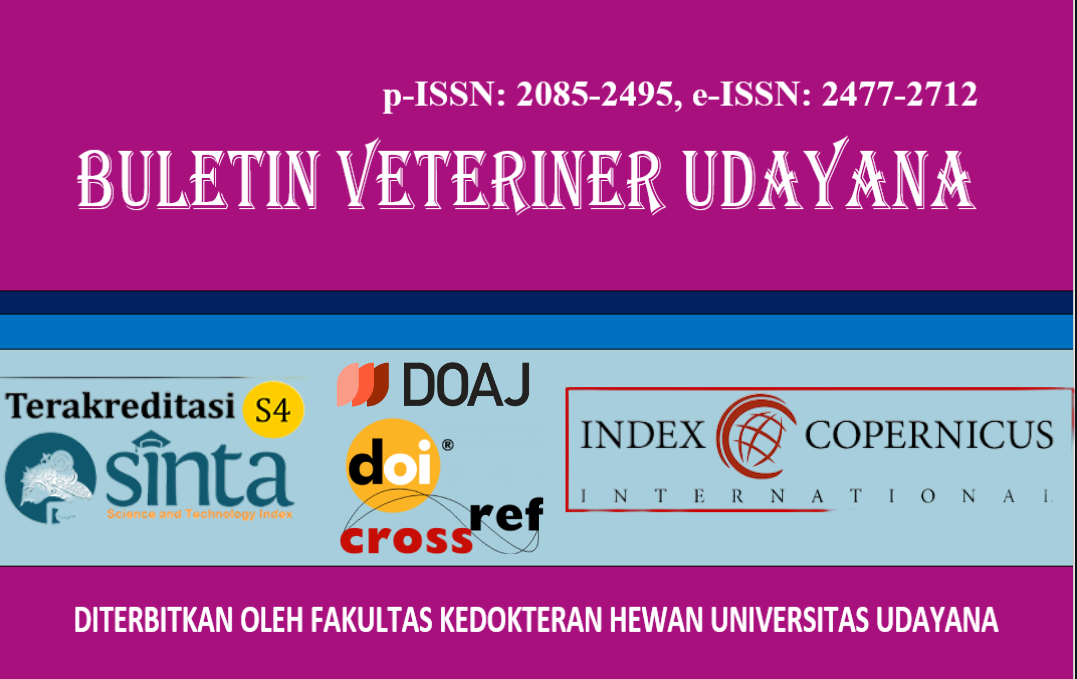REPRODUCTIVE ASPECTS OF DOMINANSIT FISH SPECIES CAUGHT IN NATURAL AND REHABILITATED MANGROVE ECOSYSTEMS IN SERANGAN WATERS, BALI
DOI:
https://doi.org/10.24843/bulvet.2025.v17.i01.p20%20Keywords:
reproductive aspects, fish species, mangrove habitat, serangan island watersAbstract
Serangan Waters Area, Bali, has a mangrove forest covering an area of 98 ha, with 33 ha in the PT BTID area. This mangrove consists of natural and rehabilitated vegetation that functions as a nursery ground for fish. This study aims to determine the reproductive aspects of fish predominantly caught in the natural and rehabilitated mangrove ecosystems in the Serangan waters, of Bali. As well as to determine the condition of the waters including temperature, salinity, dissolved oxygen, and acidity as supporting aspects of aquatic ecology. The reproductive aspects of fish that are predominantly caught in the Serangan waters were carried out for four months from June to September 2024. The study used a quantitative descriptive method. Data analysis was carried out using Excel software. Fish samples were caught at four natural mangrove stations and four rehabilitated mangrove stations using experimental gill nets (1.0; 2.0; 2.5 inches), traps, and nets. The number of fish caught was 502 individuals consisting of 17 orders, 28 families, 39 species, but only the dominant fish species caught highest in the waters of the natural and rehabilitated mangrove ecosystems were used, namely Ambassis macracanthus as many as 213 individuals, Gerres oyena as many as 76 individuals and Fibramia lateralis fish 34 individuals. The results of the study showed that the sex ratio in the rehabilitated mangrove was more balanced than in the natural mangrove, but the total average value of the sex ratio in the natural mangrove was higher than in the rehabilitation. The level of gonad maturity of the dominant fish caught was more complete in the rehabilitated mangrove than in the natural mangrove. In general, the gonad maturity index (IKG) of natural mangroves tends to be lower than that of rehabilitated mangroves. Fecundity in natural mangroves is higher than that of rehabilitated mangroves. Water condition parameters show that the DO, pH, salinity, and temperature values in the natural mangrove ecosystem are on average higher than those in the rehabilitation ecosystem. Based on the standard quality value, the pH in the rehabilitation ecosystem does not comply with the quality standard because it is below the minimum threshold. Research on food, feeding habits, and biology of fish is needed to understand fish reproduction. In addition, mangrove rehabilitation needs to be improved with habitat improvement, human activity control, and environmental monitoring for the sustainability of fish resources.




